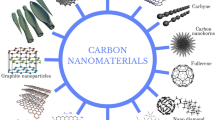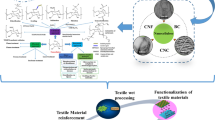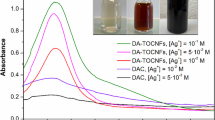Abstract
In this work, the ability of Ca2+ ions to enhance the efficacy of the aspartic acid-derived polyamidoamine M-ASP as a flame-retardant of cotton was investigated. M-ASP bears two carboxyl groups per repeat units that are negatively charged at all pH’s and can ionically interact with Ca2+ ions. Moreover, IR analysis confirmed that Ca2+ ions form Lewis’s acid/base interactions with the amide groups of M-ASP. Thermogravimetric analysis demonstrated that Ca2+ ions improve the thermal and thermo-oxidative stability of cotton treated with M-ASP. The observed effect was greater than previously observed for cotton treated with glycine-derived polyamidoamine M-GLY, which bears only one carboxyl group per repeat unit. In horizontal flame spread tests, M-ASP/CaCl2 protected cotton more efficiently than M-ASP. The effect of Ca2+ ions on cotton/M-ASP was greater than on cotton/M-GLY, both in terms of higher residue and reduced flaming and afterglow combustion times. In vertical flame spread tests, while M-ASP failed to stop cotton combustion, M-ASP/CaCl2 coatings with add-ons 12% and 2%, respectively, inhibited cotton ignition, producing modest afterglow, and leaving an almost intact mass. The efficacy was greater than that of M-GLY/CaCl2 coatings, for which 19% M-GLY add-on was required. These findings demonstrate that the interaction of Ca2+ ions with the cotton/α-amino acid-derived polyamidoamine systems remarkably improves their flame retardancy, to an extent depending on the PAA chemical structure. The high hydrophilicity of M-ASP/CaCl2 and the low add-on adopted allowed obtaining pleasant to the touch coatings and did not noticeably change the hand of the fabrics compared to untreated cotton.













Similar content being viewed by others
Data availability
All data generated or analyzed in this work are included in this publication.
References
Alongi J, Costantini A, Ferruti P, Ranucci E (2022) Evaluation of the eco-compatibility of polyamidoamines by means of seed germination test. Polym Degrad Stab 167:109854. https://doi.org/10.1016/j.polymdegradstab.2022.109854
Alongi J, Aad R, Manfredi A, Carosio F, Ferruti P, Ranucci E (2023) Use of calcium chloride to enhance the efficacy of polyamidoamines as flame retardants for cotton. Polym Degrad Stab 215:110428. https://doi.org/10.1016/j.polymdegradstab.2023.110428
Barbalini M, Bartoli M, Tagliaferro A, Malucelli G (2020) Phytic acid and biochar: an effective all bio-sourced flame retardant formulation for cotton fabrics. Polymers 12:811. https://doi.org/10.3390/polym12040811
Beduini A, Carosio F, Ferruti P, Ranucci E, Alongi J (2019) Sulfur-based copolymeric polyamidoamines as efficient flame-retardants for cotton. Polymers 11:1904. https://doi.org/10.3390/polym11111904
Beduini A, Ferruti P, Carosio F, Ranucci E, Alongi J (2021) Polyamidoamines derived from natural α-amino acids as effective flame retardants for cotton. Polymers 13:3714. https://doi.org/10.3390/polym13213714
Beduini A, Porta F, Nebbia S, Carosio F, Ranucci E, Ferruti P, Alongi J (2022) Durable, washing resistant flame-retardant finishing for cotton fabrics by covalent grafting of α-amino acid-derived polyamidoamines. In: Proceedings of the Milan polymer days congress, 19–21 June 2022, Milan, Italy, p 7, ISBN 978-88-3623-096-9
Bourbigot S, Le Bras M, Duquesne S, Rochery M (2004) Recent advances for intumescent polymers. Macromol Mater Eng 289:489–511. https://doi.org/10.1002/mame.200400007
Cheng D, Li T, Smith G, Yang J, Hang C, Miao Z, Wu Z (2019) Influence of calcium chloride impregnation on the thermal and high-temperature carbonization properties of bamboo fiber. PLoS ONE 14:1–12. https://doi.org/10.1371/journal.pone.0212886
Davies PJ, Horrocks AR, Alderson A (2005) The sensitisation of thermal decomposition of ammonium polyphosphate by selected metal ions and their potential for improved cotton fabric flame retardancy. Polym Degrad Stab 88:114–122. https://doi.org/10.1016/j.polymdegradstab.2004.01.029
Diao S, Yang Y, Tang Q, Lu Y, Zhang F (2023) Improvement of traditional proban flame retardant finishing technology for cotton fabric. Cellulose 30:6051–6063. https://doi.org/10.1007/s10570-023-05226-4
Ferruti P (2013) Polyamidoamines: past, present and perspectives. J Polym Sci Polym Chem 51:2319–2353. https://doi.org/10.1002/pola.26632
Ferruti P, Marchisio MA, Duncan R (2002) Poly(amido-amine)s: biomedical applications. Macromol Rapid Commun 23:332–355. https://doi.org/10.1002/1521-3927(20020401)23:5/6%3c332::AID-MARC332%3e3.0.CO;2-I
Forte C, Alongi J, Beduini A, Borsacchi S, Calucci S, Carosio F, Ferruti P, Ranucci E (2021) The thermo-oxidative behavior of cotton coated with an intumescent flame retardant glycine-derived polyamidoamine: a multi-technique study. Polymers 13:4382. https://doi.org/10.3390/polym13244382
Horrocks AR (2011) Flame retardant challenges for textiles and fibres: new chemistry versus innovatory solutions. Polym Degrad Stab 96:377–392. https://doi.org/10.1016/j.polymdegradstab.2010.03.036
Horrocks AR (2013) Regulatory and testing requirements for flameretardant textile applications. In: Alongi J, Carosio F, Horrocks AR, Malucelli G (eds) Update on flame retardant textiles: state of the art, environmental issues and innovative solutions. Smithers RAPRA Publishing, Shawbury, Shrewsbury, Shropshire, chapter 3, pp 53–122 (ISBN:978-1-90903-017-6)
Horrocks AR, Kandola BK, Davies PJ, Zhang S, Padbury SA (2005) Developments in flame retardant textiles: a review. Polym Degrad Stab 33:3–12. https://doi.org/10.1016/j.polymdegradstab.2003.10.024
Islam S, van de Ven TGM (2021) Cotton-based flame retardant textile: a review. BioResources 16:4354–4381. https://doi.org/10.15376/biores.16.2.Islam
ISO 5660 (2002) In fire test, reaction to fire, rate of heat release (cone calorimeter method). In: International organization for standardization, Geneva, Switzerland
Kang M, Chen S, Yang R, Li D, Wenchao Z (2022) Fabrication of an eco-friendly clay-based coating for enhancing flame retardant and mechanical properties of cotton fabrics via LbL assembly. Polymers 14:4994. https://doi.org/10.3390/polym14224994
Ling C, Guo L, Wang Z (2023) A review on the state of flame-retardant cotton fabrics: mechanism and applications. Ind Crops Prod 194:116264. https://doi.org/10.1016/j.indcrop.2023.116264
Manfredi A, Carosio F, Ferruti P, Ranucci E, Alongi J (2018) Linear polyamidoamines as novel biocompatible phosphorus-free surface confined intumescent flame retardants for cotton fabrics. Polym Degrad Stab 151:52–64. https://doi.org/10.1016/j.polymdegradstab.2018.02.020
Morterra C, Low MJD (1983) IR Studies of carbons—II: the vacuum pyrolysis of cellulose. Carbon 21:283–288. https://doi.org/10.1016/0008-6223(83)90092-1
Morterra C, Low MJD (1985) IR studies of carbons—V: effects of NaCl on cellulose pyrolisis and char oxidation. Carbon 23:311–316. https://doi.org/10.1016/0008-6223(85)90116-2
Patwardhan P, Satrio J, Brown R, Shanks B (2010) Influence of inorganic salts on the primary pyrolysis products of cellulose. Bioresour Technol 101:4646–4655. https://doi.org/10.1016/j.biortech.2010.01.112
Ponder RG, Richards GN, Stevenson TT (1992) Influence of linkage position and orientation in pyrolysis of polysaccharides: a study of several glucans. J Anal Appl Pyrolysis 22:217–229. https://doi.org/10.1016/0165-2370(92)85015-D
Rietzler B, Manian AP, Rhomberg D, Bechtold T, Pham T (2021) Investigation of the decomplexation of polyamide/CaCl2 complex toward a green, nondestructive recovery of polyamide from textile waste. J Appl Polym Sci 138:e51170. https://doi.org/10.1002/app.51170
Salmeia KA, Gaan S, Malucelli G (2016a) Recent advances for flame retardancy of textiles based on phosphorus chemistry. Polymers 9:319. https://doi.org/10.3390/polym8090319
Salmeia KA, Jovic M, Ragaisiene A, Rukuiziene Z, Milasius R, Mikucioniene D, Gaan S (2016b) Flammability of cellulose-based fibers and the effect of structure of phosphorus compounds on their flame retardancy. Polymers 8:293. https://doi.org/10.3390/polym8080293
Schartel B, Bartholomai M, Knoll U (2006) Some comments on the main fire retardancy mechanisms in polymer nanocomposites. Polym Adv Technol 17:772–777. https://doi.org/10.1002/pat.792
Sekiguchi Y, Shafizadeh F (1984) The effect of inorganic additives on the formation, composition, and combustion of cellulosic char. J Appl Polym Sci 29:1267–1286. https://doi.org/10.1002/app.1984.070290421
Sekiguchi Y, Frye JS, Shafizadeh F (1983) Structure and formation of chars. J Appl Polym Sci 28:3513–3525. https://doi.org/10.1002/app.1983.070281116
Shafizadeh F, Fu YL (1973) Pyrolysis of cellulose. Carbohydr Res 29:113–122. https://doi.org/10.1016/S0008-6215(00)82074-1
Shafizadeh F, Sekiguchi Y (1983) Development of aromaticity in cellulose chars. Carbon 21:511–516. https://doi.org/10.1016/0008-6223(83)90144-6
Speece J (1974) EC74-492 fabric flammability and clothing. University of Nebraska, Lincoln DigitalCommons@University of Nebraska, Lincoln
Sun L, Wang H, Li W, Zhang J, Zhang Z, Lu Z, Zhu P, Dong C (2021a) Preparation and characterization and testing of flame retardant cotton cellulose material: flame retardancy, thermal stability and flame-retardant mechanism. Cellulose 28:3789–3805. https://doi.org/10.1007/s10570-020-03632-6
Sun L, Xie Y, Wu J, Wang H, Wang S, Li W, Zhang J, Zhang Z, Zhu P, Lu Z, Dong C (2021b) A novel P/N flame retardant synthesized by one-step method towards cotton materials and its flame-retardant mechanism. Cellulose 28:3249–3264. https://doi.org/10.1007/s10570-021-03728-7
Tata J, Alongi J, Carosio F, Frache A (2011) Optimization of the procedure to burn textile fabrics by cone calorimeter: part I. Combustion behavior of polyester. Fire Mater 35:397–409. https://doi.org/10.1002/fam.1061
Tian CM, Guo HZ, Zhang HY, Xu JZ, Shi JR (1995) Study on the thermal degradation of cotton cellulose ammonium phosphate and its metal complexes. Thermochim Acta 253:243–251. https://doi.org/10.1016/0040-6031(94)02081-X
Tian CM, Xie JX, Guo HZ, Xu JZ (2003) The effect of metal ions on thermal oxidative degradation of cotton cellulose ammonium phosphate. J Therm Anal Calorim 73:827–834. https://doi.org/10.1023/A:1025838732084
Varhegyi G, Antal MJ, Szekely T, Till F, Jakab E (1988) Simultaneous thermogravimetric–mass spectrometric studies of the thermal decomposition of biopolymers. 1. Avicel cellulose in the presence and absence of catalysts. Energy Fuels 2:267–272. https://doi.org/10.1021/ef00009a007
Xia L, Lv Y, Miao Z, Luo L, Luo W, Xu Y, Yuan C, Zeng B, Dai L (2022a) A flame retardant fabric nanocoating based on nanocarbon black particles@polymer composite and its fire-alarm application. Chem Eng J 433:133501. https://doi.org/10.1016/j.cej.2021.133501
Xia L, Dai J, Wang X, Xue M, Xu Y, Yuan C, Dai L (2022b) Facile fabrication of multifunctional cotton fabric by AgNC@boronate polymer/crosslinked chitosan. Carbohydr Polym 288:119384. https://doi.org/10.1016/j.carbpol.2022.119384
Xu F, Zhong L, Xu Y, Zhang C, Zhang F, Zhang G (2019) Highly efficent flame-retardant and soft cotton fabrics prepared by a novel reactive flame retardant. Cellulose 26:4225–4240. https://doi.org/10.1007/s10570-019-02374-4
Yu Y (2013) Formation and characteristics of reaction intermediates from the fast pyrolysis of NaCl- and MgCl2-loaded celluloses. Energy Fuels 28:245–253. https://doi.org/10.1021/ef401483u
Zilke O, Plohl D, Opwis K, Mayer-Gall T, Gutmann JS (2020) A flame-retardant phytic-acid-based LbL-coating for cotton using polyvinylamine. Polymers 12:1202. https://doi.org/10.3390/polym12051202
Acknowledgments
The Authors thank the Italian Ministry for the University and Research, project PRIN2022 N° 202237JYZN, for financial support.
Funding
The authors declare that no funds, grants, or other support were received during the preparation of this manuscript.
Author information
Authors and Affiliations
Contributions
All authors contributed to the study. JA and RA contributed to the methodology and investigation PF and ER wrote the main manuscript and supervised it. JA prepared all figures and commented them. All authors reviewed the manuscript.
Corresponding author
Ethics declarations
Conflict of interest
I declare that the authors have no competing interests as defined by Springer, or other interests that might be perceived to influence the results and/or discussion reported in this paper.
Consent for publication
Consent for publication was obtained from all authors.
Ethics approval and consent to participate
Not applicable.
Additional information
Publisher's Note
Springer Nature remains neutral with regard to jurisdictional claims in published maps and institutional affiliations.
Supplementary Information
Below is the link to the electronic supplementary material.
Rights and permissions
Springer Nature or its licensor (e.g. a society or other partner) holds exclusive rights to this article under a publishing agreement with the author(s) or other rightsholder(s); author self-archiving of the accepted manuscript version of this article is solely governed by the terms of such publishing agreement and applicable law.
About this article
Cite this article
Alongi, J., Aad, R., Ferruti, P. et al. Enhancing the flame resistance of cotton by exploiting the interaction between calcium chloride and an aspartic acid-derived polyamidoamine. Cellulose 31, 623–642 (2024). https://doi.org/10.1007/s10570-023-05599-6
Received:
Accepted:
Published:
Issue Date:
DOI: https://doi.org/10.1007/s10570-023-05599-6




